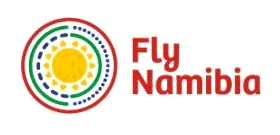 FlyNamibia and Fastjet Forge New Regional Link, Elevating Southern Africa’s Air Connectivity
FlyNamibia and Fastjet Forge New Regional Link, Elevating Southern Africa’s Air Connectivity
In a move set to reshape regional travel dynamics, FlyNamibia has entered a strategic partnership with Fastjet, one of Southern Africa’s leading carriers, to provide seamless connections between Windhoek (Namibia) and Harare (Zimbabwe) via the renowned Victoria Falls hub. Officially launched on 1 November 2025, this collaboration is poised to enhance both business and leisure travel, while reinforcing Victoria Falls’ status as a pivotal aviation gateway in the region.
The new agreement is more than a simple codeshare; it represents a coordinated effort to synchronize FlyNamibia’s Windhoek–Victoria Falls flights with Fastjet’s Victoria Falls–Harare services. This alignment allows passengers to enjoy smooth, same-day connections between the two capital cities, minimizing layovers and simplifying travel planning. For Africa’s travel sector, this development signals a new era of convenience and flexibility, opening up fresh opportunities for multi-destination itineraries and cross-border tourism growth.
Victoria Falls: The Emerging Regional Aviation Hub
Victoria Falls is rapidly evolving into a strategic hub for Southern African air travel. By serving as the connecting point between Namibia and Zimbabwe, the city not only capitalizes on its global tourism appeal but also strengthens its role as a facilitator of regional business and trade. The partnership between FlyNamibia and Fastjet is expected to drive increased passenger flows through Victoria Falls, benefiting local tourism operators, hospitality providers, and the broader travel ecosystem.
Expanding Route Networks and Future Growth
This partnership complements FlyNamibia’s expanding network, which already includes domestic destinations such as Ondangwa, Katima Mulilo, and Lüderitz, as well as regional routes to Maun (Botswana) and Victoria Falls (Zimbabwe). The airline’s commitment to regional expansion is further underscored by plans to increase its Victoria Falls service to six weekly flights from April 2026, providing even greater flexibility and more travel options for both regional and international visitors.
For Fastjet, the collaboration aligns with its strategy of broadening its regional footprint, connecting key Southern African cities, and offering travelers more efficient and reliable options. The synchronized schedules are designed to reduce travel times and enhance the overall passenger experience, making it easier for travelers to move between Namibia, Zimbabwe, and beyond.
Business and Tourism Implications
The enhanced connectivity between Windhoek and Harare via Victoria Falls is expected to stimulate both business and leisure travel. For corporate travelers, the ability to complete same-day journeys between two economic capitals is a game-changer, supporting trade, investment, and regional collaboration. For the tourism sector, the new link opens up possibilities for multi-country packages, wildlife safaris, and cultural tours that leverage the unique attractions of Namibia, Zimbabwe, and the Victoria Falls area.
This development also supports the broader vision of a more integrated Southern African travel market, where seamless air links underpin economic growth, job creation, and the diversification of tourism offerings. As more African carriers pursue similar partnerships, the region is likely to see increased competition, improved service standards, and greater resilience in the face of global travel disruptions.
Operational Excellence and Customer Experience
By aligning flight schedules and streamlining connections, FlyNamibia and Fastjet are setting a new benchmark for operational efficiency in the region. Passengers benefit from reduced waiting times, simplified ticketing, and the assurance of coordinated service delivery. This focus on customer experience is particularly important as African travelers become more discerning and as the region competes for international tourism flows.
Looking ahead, the partnership’s success could inspire further collaborations, including joint marketing initiatives, loyalty program integration, and expanded interline agreements. Such innovations will be crucial as Southern Africa positions itself as a leading destination for both intra-African and global travelers.
